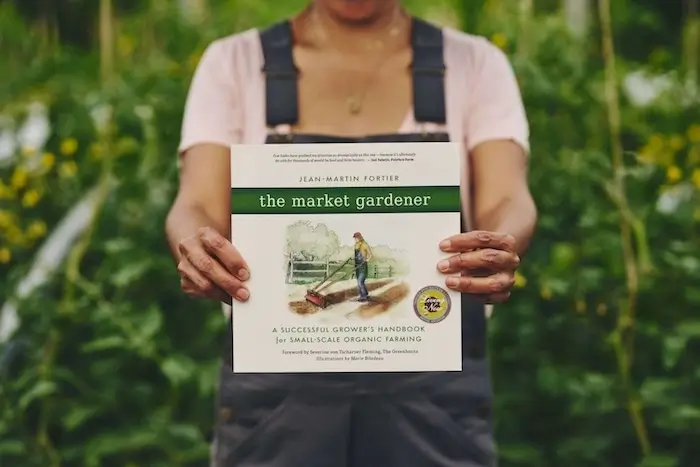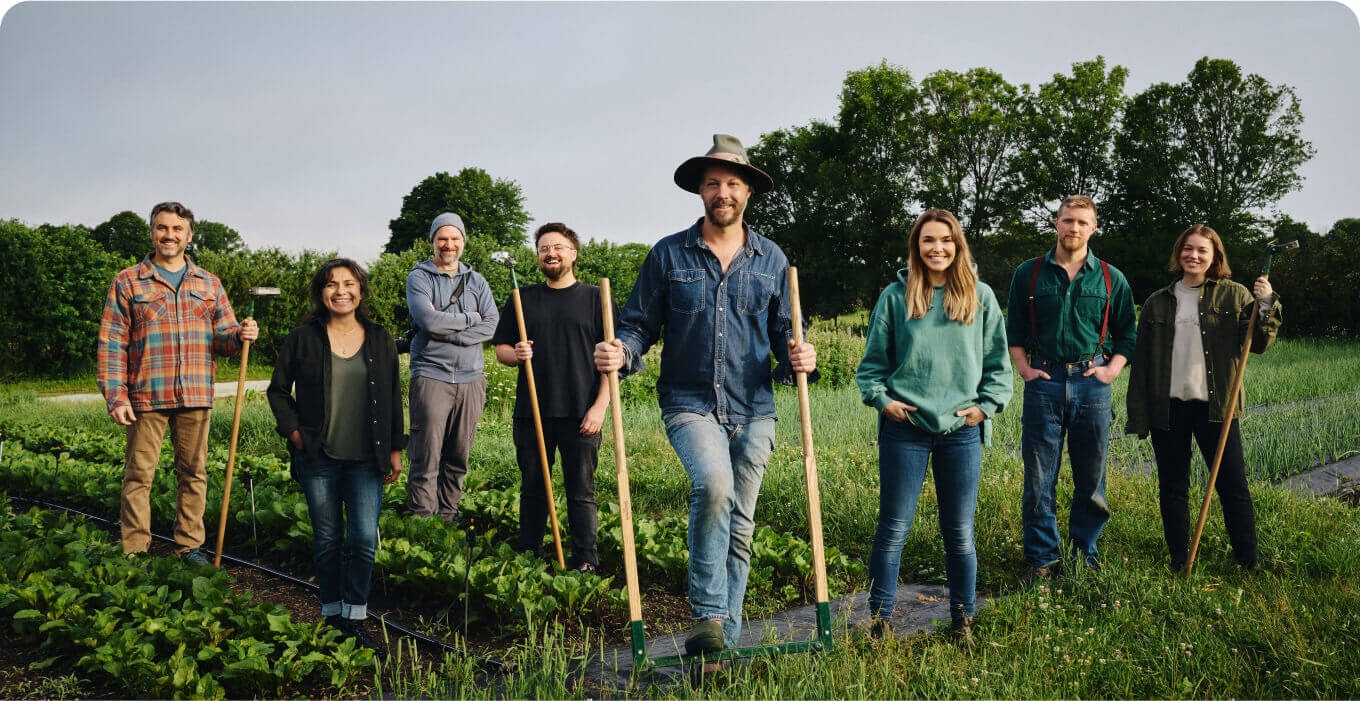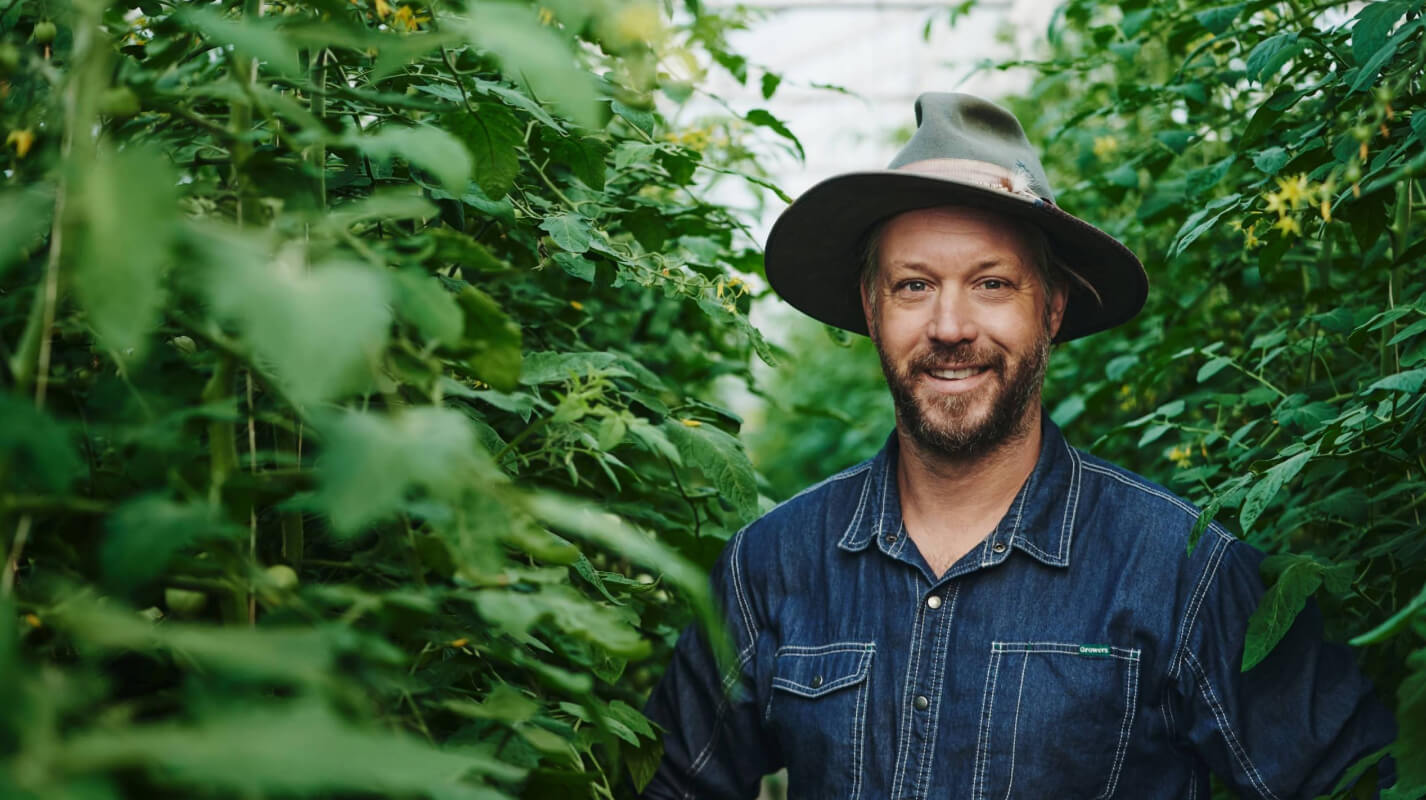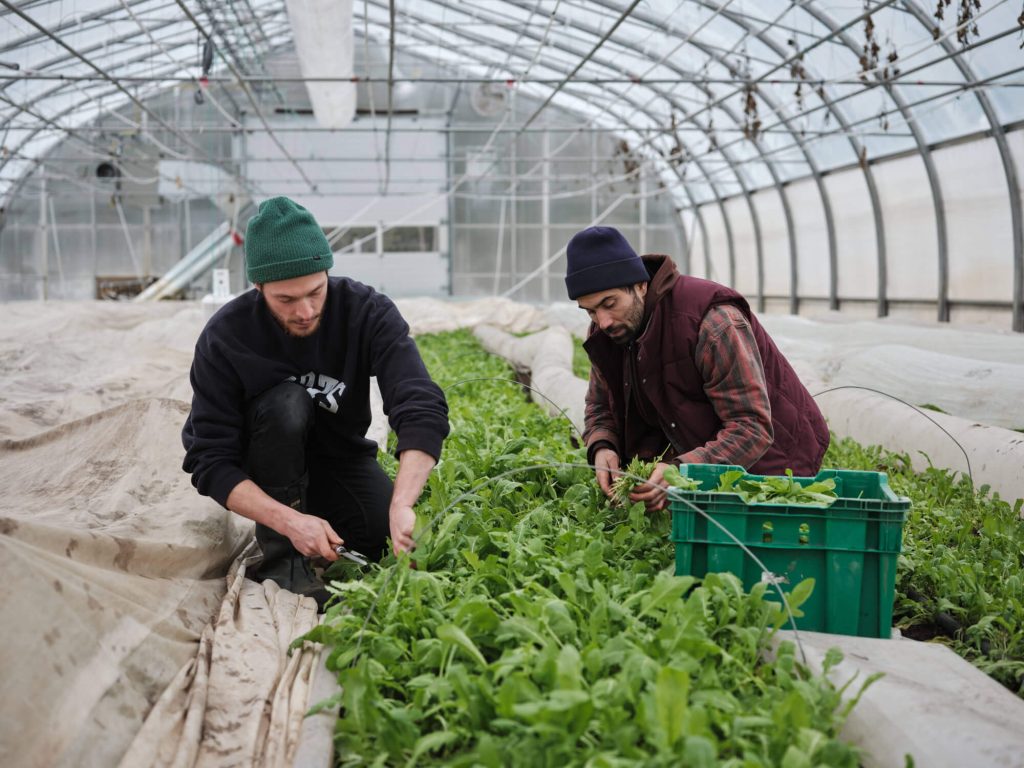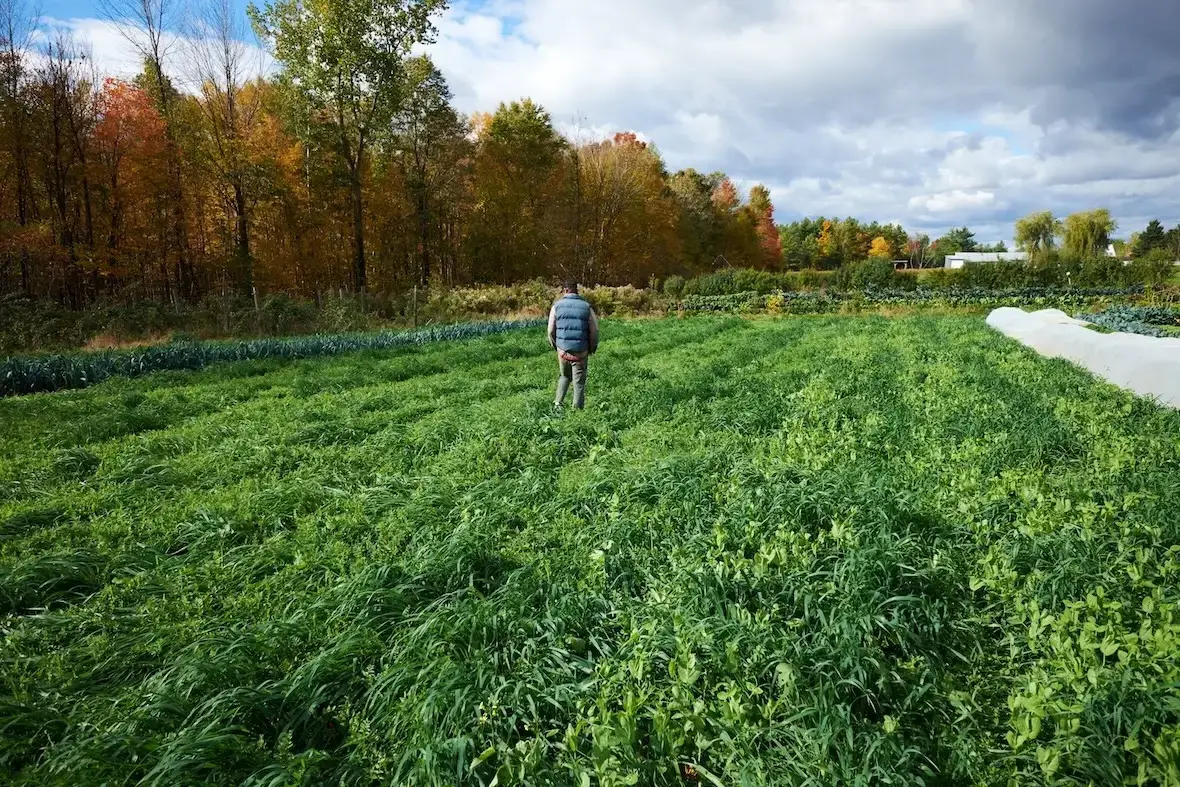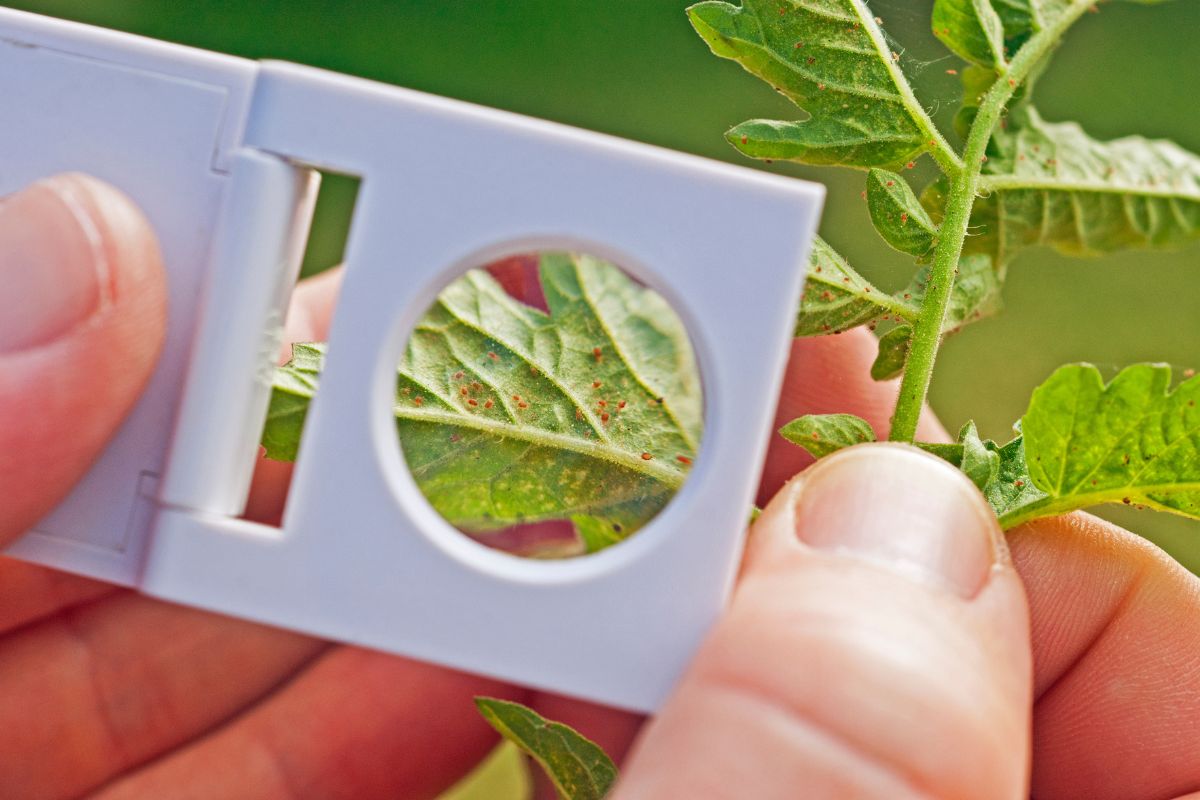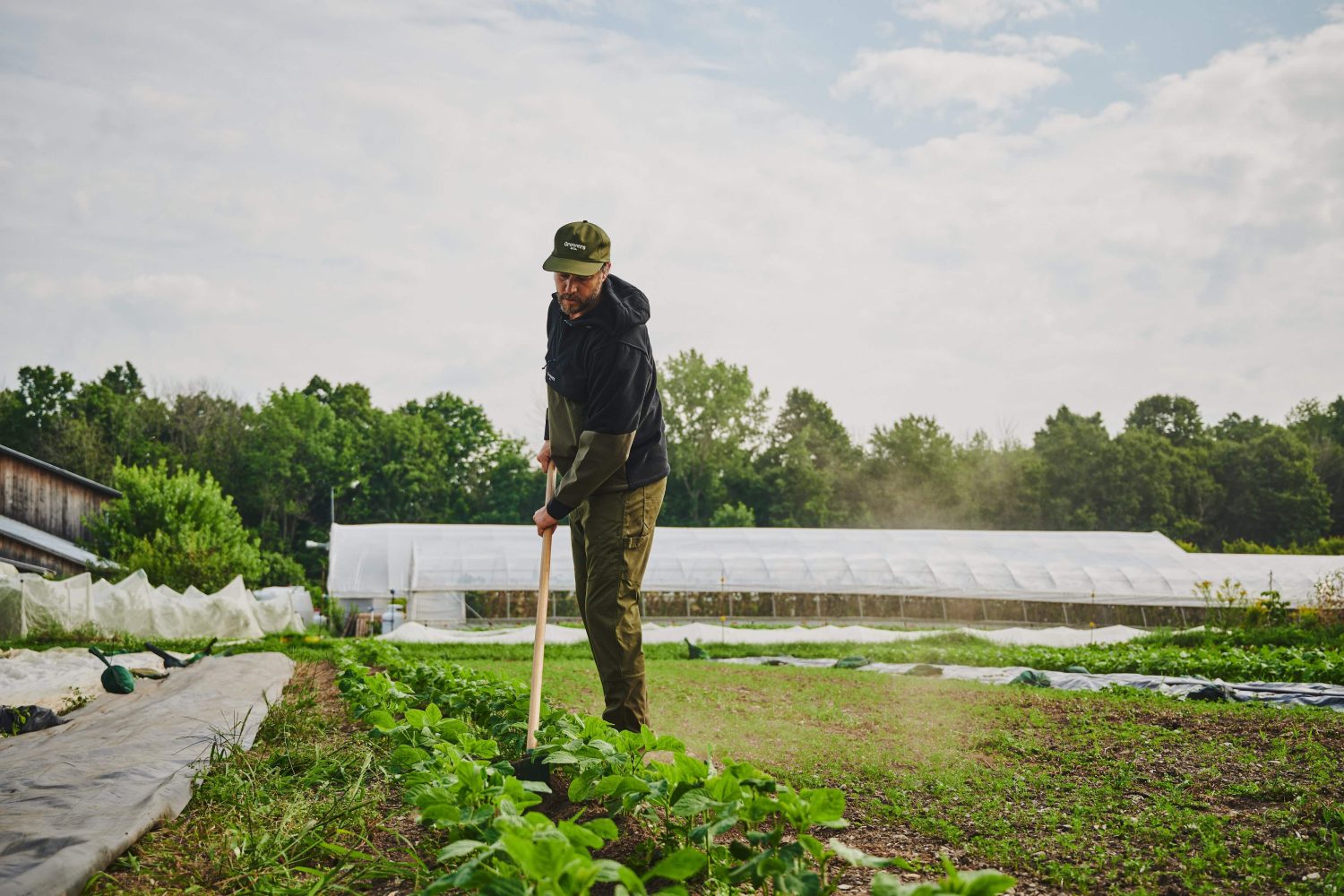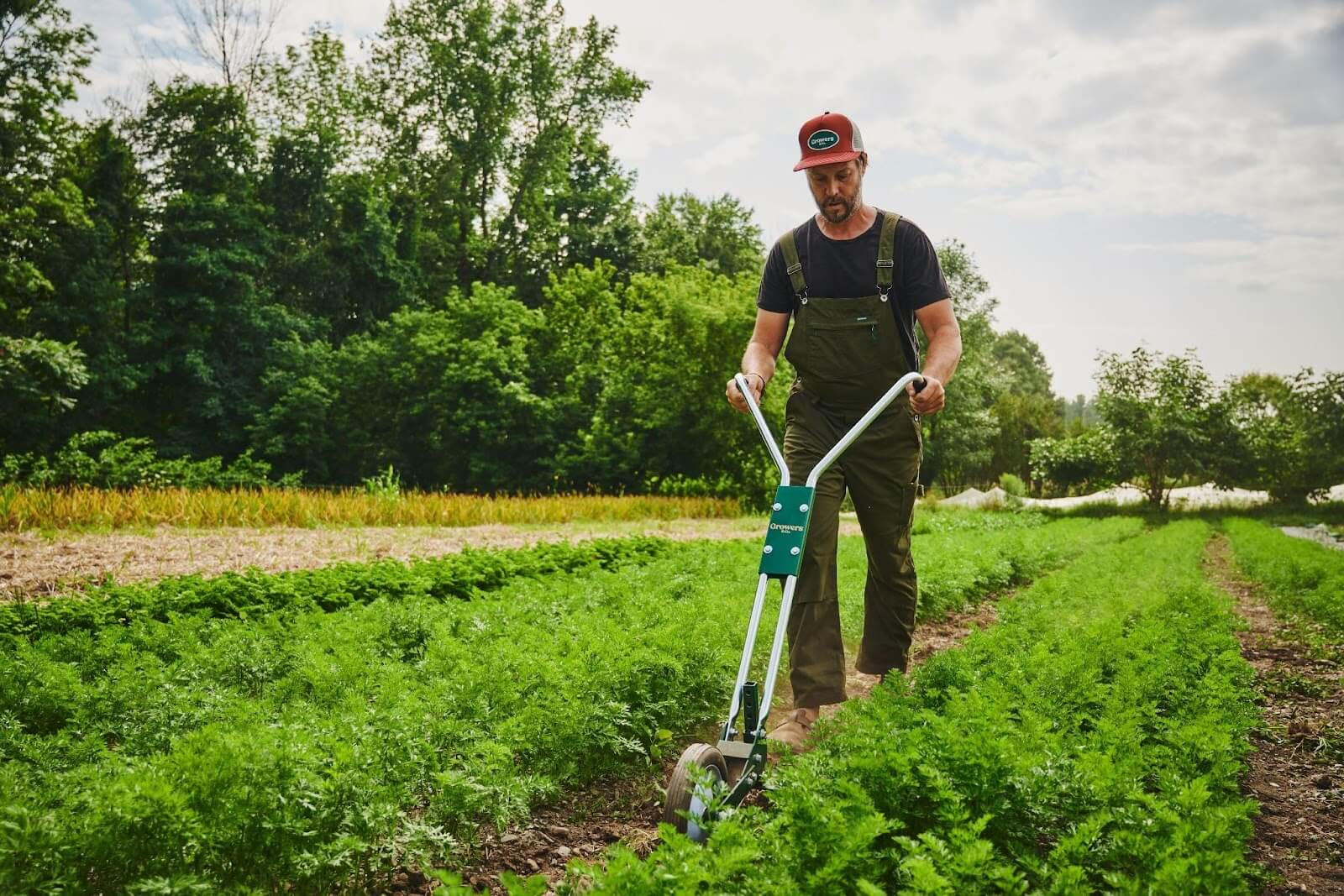Growing with greenhouses is a sure way to extend your season. In our northern climate, we use greenhouses to get prime veggies to market before any of our competitors in the spring and have an extended fall season, growing up to Christmas and beyond. Without greenhouses our season would be over at the end of October and not start up again before mid-April. As it is, we take three weeks off for the winter holidays and then are back to it by mid-January!
Growing over 4 Seasons
We grow over 4 seasons. In the winter we heat minimally and grow mostly hardy greens. In the spring we get our “prime” crops into the greenhouses as early as we can, aiming for tomato and eggplant transplants for mid-March. In the fall we use two of the greenhouses to extend the season of our summer crops (taking our tomatoes out at the beginning of November!) and two greenhouses are flipped at the end of August for winter cultures that need some time to grow (such as kale and swiss chard) before the sun nearly disappears.
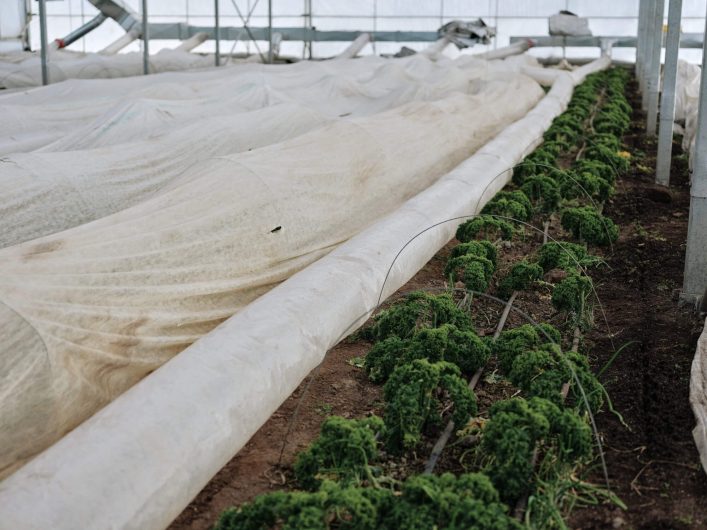
Accounting for Uncertain Climate Future
Needless to say, we are in a climate crisis with plenty of unknown variables coming our way. We might have longer winters, hotter summers, more/less wind, and rain. We have to be prepared for a variety of changes that we will have to deal with. Greenhouse growing is at least one small way that we can control the climate for our plants. By growing in a greenhouse, you are nearly guaranteeing that you will have the same offer for your customers year after year, week after week. This not only touches on season extension, as one year snow could start falling three weeks earlier than usual or 2 weeks later, but also on customer satisfaction.
Does the Infrastructure Change for Winter Growing?
We use the same systems year-round; we are not using LED lights, C02 generators, or any other kind of equipment needed to grow heat-loving crops during winter. Instead, we choose the right crops with the right cultivars, then we heat minimally and harden off the plants in the fall. We use row covers overnight and take them off on sunny days to maximize growth. Everything does grow slower, which is why it is essential to cut back on your CSA offer and to take longer coffee breaks.
Client Loyalty with Season Extension
In our experience, if you are the first person to bring a given product to market, your clients won’t forget, and you will become their farm stand for the whole season. With that experience in mind, we try to bring the “Primeur” (early vegetables) of profitable crops such as tomatoes, beans, and cucumbers to market first. When you are offering people this kind of variety at the beginning of May, especially in a northern climate where customers are craving fresh local produce, you get a lot of buzz around your market stall.
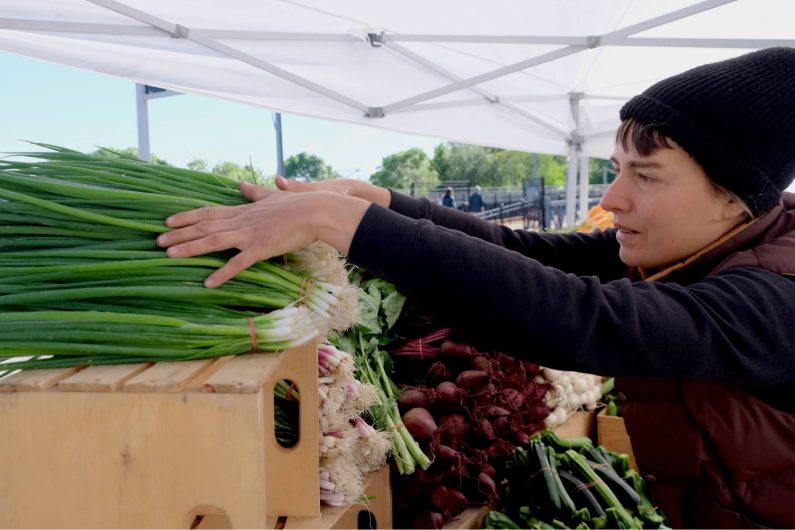
Different Time Management
Without a doubt, one of the perks of a market garden is the option of having an extended break at the end of your very busy season. Even though we do grow throughout the winter and need to prepare a lot of crops in the nursery in advance, the winter team is cut in 3 for the farm’s maintenance and harvests. So, although we are not at a standstill, we significantly slow down and there is time to rest and enjoy the winter before the season starts up in full swing at the beginning of April.
Want to Learn More before Making any Decisions Regarding Your Greenhouse?
The installation of a greenhouse is an important project for the profitability of a farm. However, the learning curve for selecting the right infrastructure and equipment can be steep, and adapting to growing crops in a controlled environment can be a challenge. That’s why we produced the course Mastering Greenhouse Production so you can avoid a lot of costly mistakes and run a successful greenhouse operation.
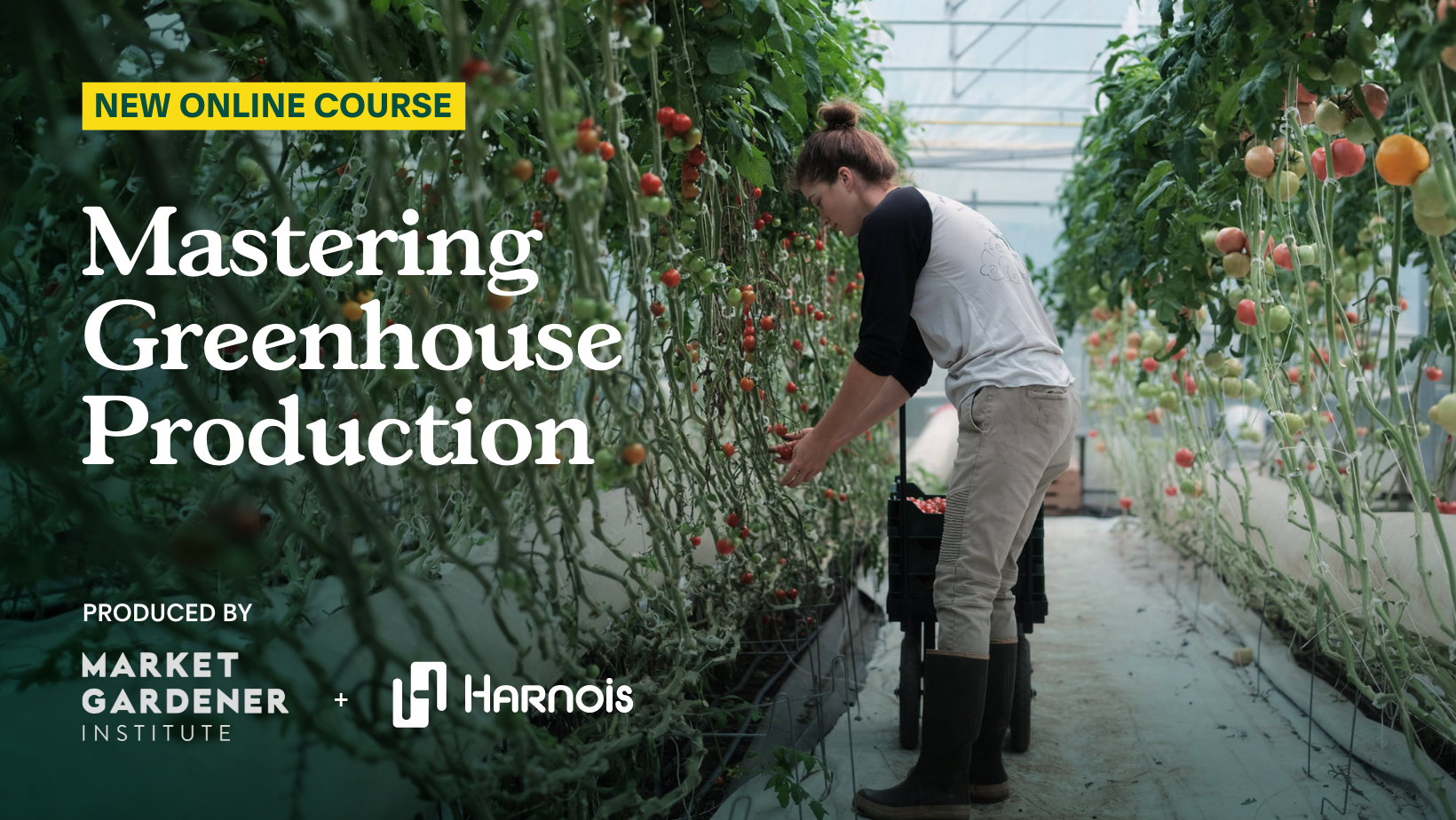
Growing with greenhouses is a sure way to extend your season. We have prepared a series of articles that will help you expand your knowledge on the topic of greenhouse installation so that this endeavor can be more enjoyable and less overwhelming.
We invite you to check out the following articles:
- Five Investments to Improve Your Greenhouse Production
- Four Factors You Must Consider Before Buying a Greenhouse
- How To Properly Ventilate Your Greenhouse and Why this is Essential in Your Success
- What is the Most Efficient Way to Heat Your Greenhouse?
- Should You Consider Automatization to Increase Your Greenhouse Yields?

